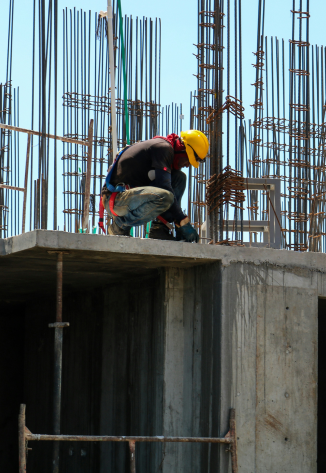The Edge/Cutout Area Protection system utilizes advanced computer vision to ensure that workers maintain a safe distance from hazardous edges and cutout areas on construction sites. This technology is vital for preventing falls, one of the leading causes of workplace injuries in the construction industry.
Edge/Cutout Area Proximity

Traditional methods of monitoring worker proximity to hazardous edges or cutouts are labor-intensive and prone to human error. These limitations make it difficult to maintain safety standards consistently.
Accidents involving falls from heights or into cutout areas can result in severe injuries or fatalities, making it essential to enforce strict safety measures around these hazards.
Failure to enforce proper protection measures near edges and cutouts can lead to violations of safety regulations, resulting in fines, legal liabilities, and project delays.

To address these challenges, we have implemented an AI-driven Edge/Cutout Area Protection system, integrated with the NWarch AI platform. This solution employs state-of-the-art computer vision and machine learning algorithms to monitor workers' proximity to hazardous areas in real-time.
Our system automatically detects when workers approach dangerous edges or cutouts, analyzing live video feeds to ensure safety.
Instant notifications are sent to supervisors if a worker gets too close to a hazardous area, enabling prompt corrective actions.
The system generates comprehensive reports on proximity violations, offering insights that help refine safety protocols over time.
The system integrates seamlessly with existing construction and safety monitoring systems, offering a comprehensive approach to workplace safety management.
Variations in camera resolution and environmental conditions can affect detection accuracy. Difficult lighting, such as shadows or glare, can impede the system's performance. Obstruction of the field of view by other workers or equipment can complicate monitoring.
Processing live video feeds and proximity detection algorithms demands high computational resources. The system must be optimized for low latency to ensure timely alerts.
Differentiating between safe proximity and hazardous proximity requires precise calibration to avoid unnecessary interruptions. Ensuring that workers are protected without false alarms is crucial for maintaining operational efficiency.
Proximity safety compliance saw a significant improvement, reducing the risk of falls and related accidents on-site.
Real-time detection and alerts minimized incidents of workers entering hazardous areas, contributing to a safer work environment.
The system’s effectiveness in enforcing edge/cutout safety protocols led to a notable decrease in fall-related injuries.
By automating the monitoring of hazardous areas, the system allowed safety officers to focus on more strategic tasks, improving overall site management.
Detailed reports provided actionable insights that enabled management to enhance safety protocols, further improving compliance and reducing risks.
This website uses cookies to improve your experience. We'll assume you're ok with this, but you can back-out if you wish.